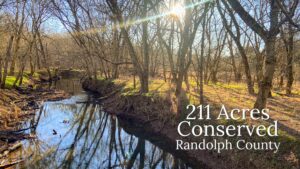
by Crystal Cockman
May 13, 2016
Many people confuse harmless water snakes with the venomous water moccasin or cottonmouth snake. This has lead to the death of many of the harmless water snakes. Water moccasins (Agkistrodon piscivorus) are North America’s only venomous water snake. They have a distinctive triangular head and a thick body. Cottonmouths are to be avoided, as they are capable of delivering a painful and potentially fatal bite. Water snakes, in the Nerodia genus, tend to have a narrower and rounded head and a longer and more slender body.
Water moccasins are only found in the Southeastern United States. They are pit vipers and have heat sensing facial pits between their eyes and nostrils. The pits detect differences in temperature so a snake can attack a warm-bodied prey. The name cottonmouth comes from their threat display, where they will stand their ground and gape open their mouth at an intruder, showing the white lining in their mouth. Many cottonmouths are black in color, but may vary from brown to tan to olive as well. They have a pattern with brown or black crossbands. Their bellies are white with dark spots.
Cottonmouths live in creeks, streams, marshes, ponds and lakes. They are also found in brackish waters and sometimes even in salt water. They are semi-aquatic, so they are also found on land, sometimes more than a mile away from water. They are active both at daytime and at night. They eat small fish, mammals, birds, amphibians, reptiles, and even other snakes.
Water moccasins have a reputation for being aggressive, but some of that is exaggerated. Water snakes usually flee from intruders whereas cottonmouths stand their ground. Cottonmouths vibrate their tales when excited and water snakes do not. The brown water snake (Nerodia taxispilota) is one such snake confused for cottonmouths, but they swim with their body below the water and only their head sticking out, whereas cottonmouth’s entire bodies are above surface.
Redbelly watersnakes (Nerodia erythrogaster) are easily identified by a reddish orange belly and reddish brown to dark brown back, both unmarked. Unlike other water snakes, they will travel overland for long distances from permanent water sources. Banded watersnakes (Nerodia fasciata) have heavy bodies and brown backs marked with reddish to dark brown crossbands. They are distinguished from the northern watersnake (Nerodia sipedon) by a dark band stretching from the eye to the corner of the jaw. They will sometimes hybridize with northern watersnakes in the area where the Coastal Plain and Piedmont meet and both snakes are found.
Cottonmouths are near the edge of their range in Montgomery County, and many other water snakes are more common. However, it’s important to pay close attention when you encounter a watersnake, and always a safe choice to keep your distance.